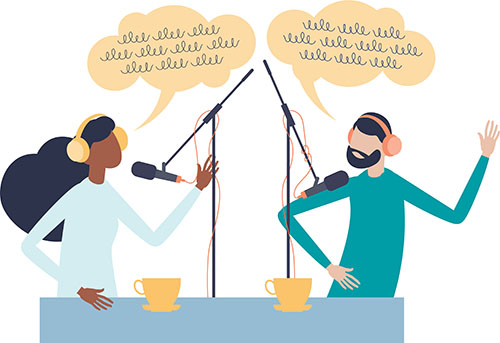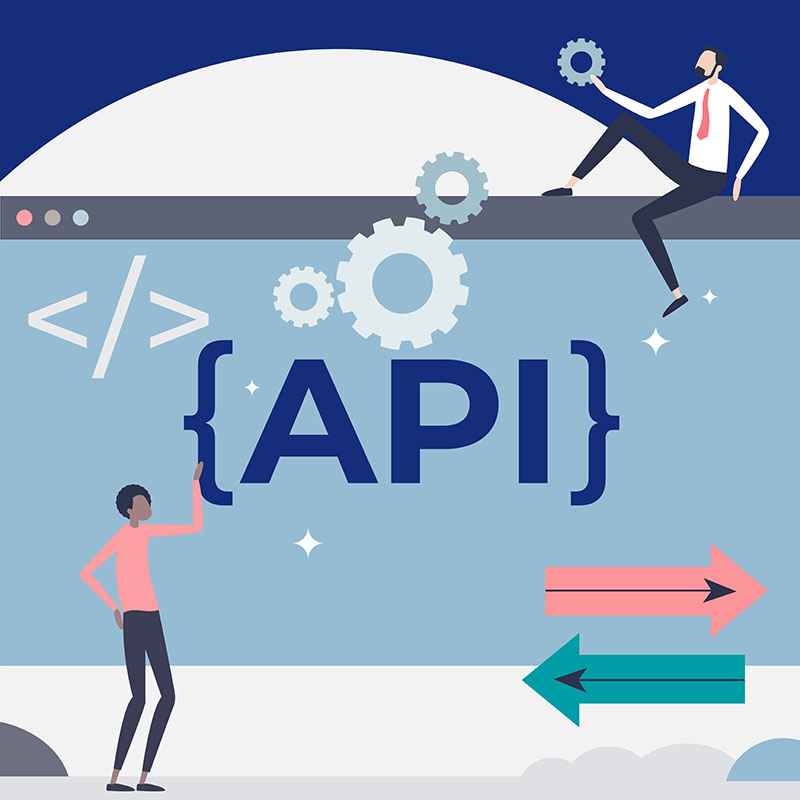Multilingual website: connect with your global audience
As more and more people look online for information, products and solutions, your website has seconds to make an excellent first impression. Building a lasting relationship with your online audience and driving conversion means engaging visitors in their language. A multilingual website is a perfect way to start.
So how do you publish content in all languages on time? And what can you do to make this content visible to the right audience?
Read on to discover multilingual website essentials, what you need to get started, best practices, and much more.
Contents
What is a multilingual website?
As the name suggests, a multilingual website contains web pages in more than one language. These pages can include many types of content, such as blogs, infographics, case studies, forms, audio and video.
Despite being the most widely available language online, English isn’t as effective as it may seem when going global. Businesses with English-only websites struggle to genuinely connect with local audiences and miss out on huge opportunities to increase demand. In fact, a Nimdzi study found that 7 out of 10 users will always opt for their native language over English.
Translation and transcreation bridge the gap and show you care about meeting your customers’ expectations. But you can only leave a good impression if this is done well. Simply relying on machine translation comes across as unprofessional and can even damage your reputation.
Multilingual websites should also offer relevant pages to different markets in the right language. Adjustments to the layout and type of content may be needed to accommodate linguistic or cultural norms. Ultimately, your site needs to help visitors find exactly what they need – if it’s unavailable or not user-friendly, they’ll look elsewhere.
Here are just some of the benefits:
-
Building trust
-
Reaching a wider audience
-
Crafting a personalized experience that still reflects your brand
-
Beating your competitors
-
Offering a frictionless path to purchase
- Read more benefits
What makes a great multilingual website?
Offering a complete website in your customer’s local language is a proven driver for success. The most high-performing sites take their translations further for a more targeted approach – with localization. We have a handy e-book all about it, but to sum up: localization involves culture-informed adaptation. It presents your brand and content in a way that feels familiar and resonates with the foreign market.
A successful multilingual website strategy considers what defines your products and services. It fine-tunes the messaging down to the last detail to deliver a perfect fit for what people in another culture need.
Understanding the target culture is vital to get potential customers on board, as that’s what truly informs how people interact with your brand. Cultures can even differ in a single country. By examining each group’s behaviours, needs and motivations and using them to inform your messaging, you’ll offer frictionless communication wherever your business goes to market.
A thorough language strategy will help you choose the correct language(s) and improve your brand perception. Connecting with your new audience and proving that you’re the one to trust leads to significant growth in visitors and prospects at every stage of the buyer’s journey.
Building a multilingual website is critical to be where your customers are. Making the right choices may seem overwhelming, but it’s well worth the effort. Attached has taken hundreds of brands to the next level. We’ll analyze your existing website and zero in on the best ways to speak to your markets in any language.
Next, we’ll cover some of the benefits of localizing your site.
just like a native.
7 benefits of having a multilingual website
Building a future-proof multilingual website secures your international growth. When it comes to your brand’s global image and performance, there are plenty of advantages that will come your way.
1. Building trust
Making your visitors feel seen fosters relationships and brand loyalty. And the best part is that customers will spread the word.
2. Reaching a wider audience
A well-designed multilingual website attracts more potential customers and opens your business to new markets. 91% of users would be willing to check out localized products, and two-thirds wouldn’t hesitate at all, according to Nimdzi.
3. Crafting a personalized experience that still reflects your brand
Consumers are increasingly demanding bespoke products and services. Localization proves you’re consistent and conveys your core values without alienating your new and current audiences.
4. Beating your competitors
A multilingual website gives you the much-needed edge to set you apart. Distinguishing your pages from English-only sites converts international traffic, lands partnerships and multiplies sales. That means less pressure on your teams, including customer service, and smart cost reductions.
5. Offering a frictionless path to purchase
A Nimdzi survey found that e-commerce sites in the visitor’s native language would win over 70% of respondents that were undecided and unwilling to spend.
Avoiding cultural insensitivity and offering open and secure communication (including after-sales support) leads to seamless purchases and positive reviews.
6. Leveraging multilingual SEO
When correctly optimized, a single domain has the power to reach several countries and languages.
People tend to first search in their native language, meaning that multilingual content and search engine optimization (SEO) best practices send the right people your way. What’s more, you can boost your rankings in less saturated markets.
7. Maximizing opportunities for growth
According to CSA Research, 40% of shoppers will never buy if a site is in another language. Businesses could double their revenue with a localized website. Improved communications on a global scale are a sound investment that pays off.
Which components are essential for a multilingual website?
End-user data revealing consumer preferences and more traditional information on the wider culture will point you in the right direction to create a multilingual site that captures users’ attention and makes perfect sense in languages you don’t speak. The key components below are useful for making informed choices.
Language strategy
When expertly crafted and backed by research, your company’s communications make expansion easier and build rapport with your new customers. Developing a plan for success is one of the most impactful things that your team can do.
A comprehensive language strategy in place gives you an in-depth understanding of how cultures work and evolve and the best ways to appeal to a particular group. Looking into your metrics and competitors’ performance in potential markets will help you narrow down which languages and content to prioritize. You can then translate what works and adapt or omit what doesn’t travel well (puns, repetition, idioms, etc.).


Multilingual SEO and SEA
There’s more to multilingual SEO than just translating existing keywords you’ve worked hard to target. It may even involve different search engines like Baidu, Yandex, Bing and Yahoo.
International SEO is more specialized, meaning you need to go deeper into your site’s optimization to cover the aspects that only apply to multinational or multilingual sites. Structuring your URLs with a language indicator will also help search engines show the correct pages in search results.
Cultures and varying user behaviours also inform SEO, so you’ll have to explore how your site can be found from a broader international marketing perspective and with in-depth SEO and SEA strategies.
API and CMS connectors
Gone are the days of copying and pasting content and using multiple platforms to coordinate your company’s teams. All you need is a suitable application programming interface (API) integration and CMS. Not keeping CMS language translation requirements in mind will make content management a hassle with added manual steps, like uploading or updating content across multiple platforms. It’s important to explore connectors and APIs for CMSs and choose the ones that will meet all your needs.
On top of allowing continuous localization and updates, you can customize translation resources for consistency across all messaging and extra cost savings. With a faster turnaround and time to market, international customers will no longer have to wait for translated content.
See also: Customized API solutions to increase workflow optimization


Localized multimedia content
With consumers wanting information as fast as possible, videos and other media are more popular than ever. However, multimedia translation is often overlooked. Designing your multilingual website as a dynamic environment with pertinent content improves user experience. Avoid embedded text to make localization straightforward – separated text is also indexable for search engines. Audiovisual content also benefits from targeted keyword research. Informational videos with subtitled transcripts can show at the top of Google’s results page.
You can find 8 tips for creating and managing multilingual multimedia content for an enhanced multilingual website.
With the right planning and tools, you can produce translations for your pages with as little effort and time as possible and effectively manage multiple campaigns across languages and borders. Since these elements are pretty technical and there is no one-size-fits-all solution, it’s always a good idea to get an expert opinion on what works – especially if you don’t speak the language.
How and where to start
It’s clear that there’s a lot to think about when deciding how to translate your website into other languages. So, where do you begin? Fortunately, you can build a strategy for an optimized multilingual website using what you already have at hand to save time and money. A website audit will help pinpoint whom to target as well as how and when to do it.
Use research to narrow your focus
You’ve already conducted market research to create an engaging website for users in your domestic market – now it’s time to find the best audiences for expansion.
It’s critical to be strategic here; you don’t have to target everyone, but rather the markets with significant demand. Look at your visitor metrics to see where your potential international customers are from and how their conversion and purchasing rates compare to domestic visitors. To thoroughly assess opportunities, it’s necessary to learn about each target user audience and clearly define your value proposition and positioning.
This preliminary stage will determine how feasible and worthwhile it would be to introduce your products and services to specific markets. Your research may even reveal potential opportunities you weren’t previously aware of.
Analyze your content
A site audit also involves looking at your existing content before picking the appropriate services to best get your message across.
The Attached team goes over all your materials with a fine-tooth comb and answers all the necessary questions, such as:
- Which product/service names need localizing, and which ones can stay the same?
- Is the wording/style appropriate for the target market? How will they react?
- Do the images/colours on this site have different connotations?
- Will this content generate interest if it’s translated?
In-depth research across cultures and languages – particularly about cross-cultural risks and country-specific commercial considerations – will produce tailored sites encouraging engagement and purchases.
Consider the layout and finer details
Are you expanding by region or language, or are you targeting a country? You’ll have to change calendar dates, measurements, currencies and more as appropriate, depending on your specific strategy.
If you’re selling products, consider appropriate pricing for your target countries, as well as common payment methods and logistics. Find out if customers have to cover taxes and duty fees and how returns are handled.
When switching languages, your layout will most likely be affected by text expansion, contraction and alignment when changing the text direction. Adapt your page design so text can still fit in buttons, text boxes and so on. For right-to-left languages, align text and header layouts to the right.
Cover all the bases with a site audit
A site audit will help you make smart and cost-effective choices, but it can be challenging. On top of the painstaking research and expertise required, in-house teams already have enough on their plate and may not have the right resources.
Attached can take care of it for you, with additional language consulting based on your goals to give you tailored advice and support. Our extensive network of local marketing experts and decades-long experience offering services for multinational companies will bring relief to your teams. You can count on trusted professionals that cover the entire localization process with precision and a faster turnaround.
Kick-start your strategy and truly engage visitors like a local
It’s no secret that a monolingual marketing approach is a significant barrier to international growth. A seamless multilingual website is the best solution to win over new audiences, increase revenue and realize your brand’s true potential.
If you’re looking to stand out in the global marketplace, Attached can help at every stage.
Ready to lay the groundwork for a winning localization strategy? We’ll gladly run a site audit and offer personalized advice on the best approach – reach out to us today.










